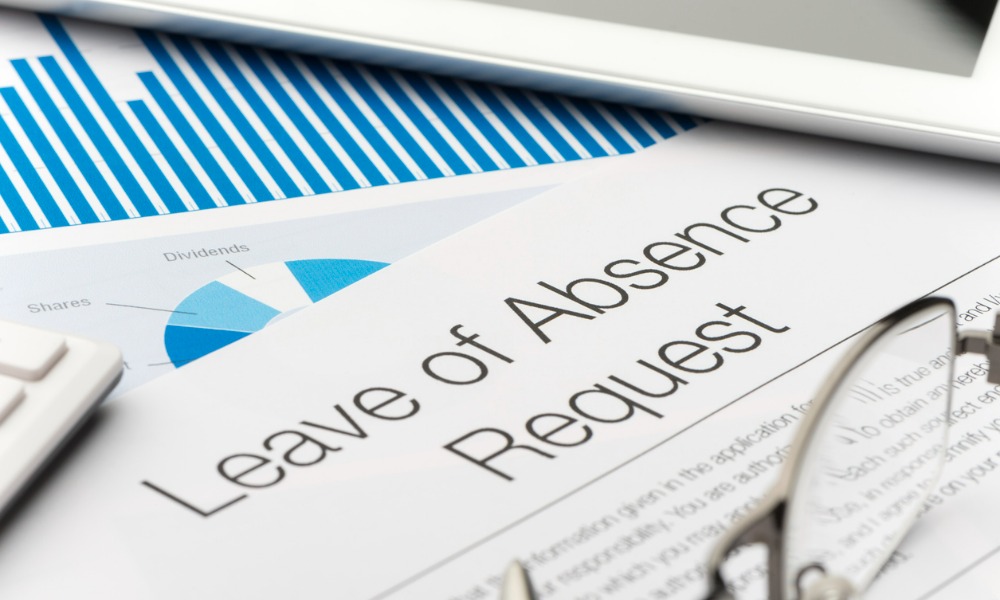HR leaders must balance the needs of both the employee and company when it comes to extended leave

It happens – employees hit a point where they are tired and need time away from work to rest up. Usually, the time off needed is more than just a day, and employees coordinate with their managers for a longer absence.
But what if they don’t return past their last filed leave? Can the absence be considered as a sign of quitting?
What does it mean to take a leave of absence?
A leave of absence is time employees can take away from work for a specified period and reason. Employees can file for leave for various reasons, such as due to personal sickness or injury, to care for sick family members, or for holidays. The time off from work can either be paid or unpaid depending on the leave taken. According to the Fair Work Ombudsman, an award, employment contract or agreement can decide how much and what type of leave entitlements employees can take, so long as it is not lower than the minimum leave entitlements set by the National Employment Standards (NES).
The NES are 11 minimum employment entitlements set out under the Fair Work Act 2009 that companies are required to provide. Some of the NES entitlements cover flexible working arrangements, weekly hours, casual to permanent employment offers, notice of termination and leave entitlements. There are different types of leave available for employees such as:
- Annual leave
- Everyone except casual employees are entitled to paid annual leave for a minimum of four weeks per year.
- Sick and carer’s leave
- Employees, except casual workers, can take paid sick and carer’s leave that allows them to be away from work due to an injury or illness affecting them or an immediate family member.
- Compassionate and bereavement leave
- Employees are entitled to time off if a dependant dies or develops a life-threatening illness or injury. A dependant can be a spouse, partner, children, parent, and anyone else living in the household or relies on the employee for care.
- Maternal and parental leave
- Maternity and parental leave allows employees to take time off to give birth, be there for a spouse who is giving birth, take care of a newborn and to take care of adoption responsibilities for children under 16 years of age.
- Family and domestic violence leave
- Five unpaid days’ worth of time off is given to employees experiencing violent, threatening or abusive behaviour by a close relative or partner. The family and domestic leave is covered by the NES.
- Long service leave
- Long service leave is given to employees after a long period of working for the same employer. Employees are entitled to around two to three months’ worth of long service leave if they have worked between five to 10 years for their employer. The length of entitlement depends on the state or territory.
- Community service leave
- Employees are given leave entitlements for voluntary emergency management activities or jury duty. A voluntary management activity can be an activity involving an emergency or natural disaster, an activity where the employee was requested to participate in, or an activity where the employee is a member of or has a member-like association with a recognised emergency body.
There are other leave entitlements companies can offer such as sabbatical, study and adoption leave. Companies are free to offer more leave entitlements for their employees on top of the required NES leaves. The leave options are offered to help employees deal with emergencies, personal matters and physical and mental illnesses that may hinder them from working at their best.
How long can an employee take a leave of absence from work?
The minimum leave entitlements required by the NES ensures reasonable and adequate time off for employees. Additional leave entitlements given by the company are there to further help employees balance time away from work, to keep them satisfied with the organisation and to remain attractive and competitive in the eyes of job seekers.
However, it is unavoidable that some employees would need to take time off from work past their leave entitlements due to unforeseen circumstances. The Fair Work Ombudsman acknowledges those instances if an employee cannot work for longer periods of time due to an illness or injury. It is advised that those employees may provide proof to avoid being wrongfully dismissed for being away for less than three consecutive months or less than three months in total over a 12-month period or are still on paid sick leave.
If an employee is gone for longer than three consecutive months, they will no longer be protected from being dismissed even if they provide evidence. If the dismissal was unjust, harsh or unreasonable despite the employee being gone for more than three months and used all their sick leave, employees may challenge the termination and file a claim.
Is not returning from an extended leave of absence grounds for dismissal?
There are instances where an employee does not return to work past their allowed leave of absence. In an instance like that, an employer cannot just assume the employee has quit and therefore proceed to terminate an employment simply because they have not reported to work after their leave of absence. There may be certain state and territory laws that may cover the employee’s absence.
A company needs to approach the situation on a case-by-case basis. Employers need to make the effort to contact the questionable employee regularly during their absence and to understand whether the purpose of the extended absence is reasonable or not. The best way to do this is to maintain a form of communication with the employees who are on leave for a lengthy period. The line of communication allows HR leaders to find out how the employee is doing and lessens the awkwardness for employers who are worried of invading the employee’s privacy.
It is also the duty of the employers to issue formal warnings for the unexplained absences. It is important for HR leaders to inform the employees that they are on the path to a dismissal should the unexplained or unreasonable absence continue. It is also best for employers to record proof of the absence such as a medical certificate or report for future reference. This process protects both the employer and employee from an unjust dismissal.
In addition, employers need to be prepared with negotiating with the employee should they reach out for an extension of absence or to reassess an employment arrangement that would best suit the current situation of the employee. HR leaders need to evaluate whether their request is reasonable for both parties and from there negotiate new terms and a clear expectation from the employee. The goal of HR leaders is to find the balance between satisfying employees’ reasonable needs and reaching the business’ goals.








